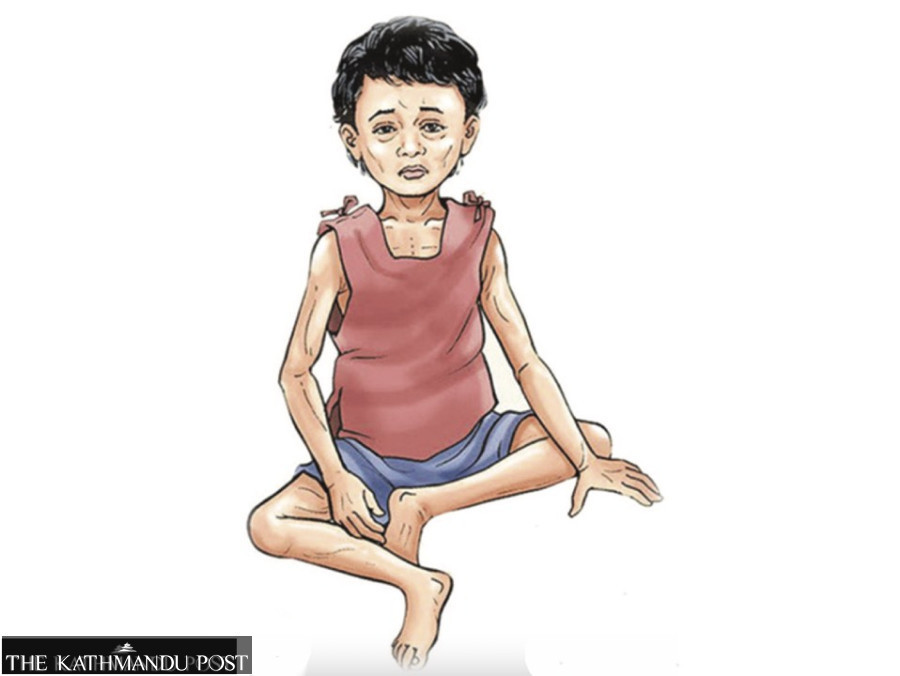Health
Over 1,500 children in Banke found malnourished
Experts say the sharp rise in malnutrition cases is alarming and increases the risk of deaths.
Post Report
Over 1,500 children under five years of age from Banke district have been found suffering from malnutrition–either moderately or severely–in the last five months. The number could be even higher, as not all the children of the age group have been screened.
“The number of the diagnosed cases were reported by the health facilities, where ailing children were taken for treatment or reported by female community health volunteers,” said Angad Bahadur Shahi, chief of the Health Office, Banke. “A separate screening programme has been started, which will tell the exact scenario.”
Malnutrition is considered a silent health crisis in Nepal. The country has made significant progress in reducing stunting among children under five, which fell from 57 percent in 2001 to 25 percent in 2022, according to the Nepal Demographic and Health Survey-2022.
However, the progress is not the same in all provinces. More than 16 percent of the children under five years in Lumbini Province [Banke district is part of Lumbini Province] suffer from wasting—the most immediate, visible, and life-threatening form of malnutrition.
Child health experts say a sharp rise in moderately and severely acute malnutrition cases in Banke is alarming, which could hinder attempts to reduce malnutrition and overall hunger problems. The increase in the problems will also hinder the attempts to achieve the United Nations-backed Sustainable Development Goals (SDGs).
SDGs, a follow-up on the Millennium Development Goals (MDGs), aim to end poverty, hunger and all forms of inequality in the world by 2030. Nepal has set targets to meet those goals.
The country needs to reduce stunting to 15 percent from the existing 25 percent by 2030 to meet the SDGs targets, wasting to 4 percent from the current eight percent and underweight to 10 percent from the existing 19 percent.
Wasting or underweight for one’s height in children, if not treated properly and on time, is associated with a higher mortality risk, according to the World Health Organisation.
“Severe acute malnutrition is a medical emergency, and such children need immediate hospital admission and treatment,” said Dr Shyam Raj Upreti, a child health expert who is also the former director general at the Department of Health Services. “Detection of moderately acute malnutrition means the problems have started recently.”
He said these indicators show that efforts to rein in existing malnutrition problems and end them permanently are insufficient.
Malnutrition plays a major role in the under-five mortality rate. The problem also hinders children’s mental development and eventually affects the country’s economic health by weakening intellectual capacity, reducing productivity in adulthood, and increasing vulnerability to diseases, according to experts.
Health authorities have taken various measures to address malnutrition problems, including distributing ready-to-use food and running nutrition rehab homes in 24 federal and provincial hospitals. Severely acute malnourished children get admitted and treated in those centres.
Experts stressed addressing moderately acute malnutrition problems, which are likely to become severe if not treated timely.
“Many people consider malnutrition only a health problem, but it is a multisectoral problem, which needs a multisectoral approach to deal with,” said Upreti. “Treating severely malnourished children does not stop the problems. We need to address the poverty of their families.”
Experts said non-health interventions—awareness drives, improved financial conditions of people, their education levels, and sanitation conditions—could go a long way in improving health indicators, including nutrition status.
“We have made a multisectoral nutrition plan to address the existing malnutrition problems,” said Lila Bikram Thapa, chief of the Nutrition Section at the Family Welfare Division under the Department of Health Services. “Sincere efforts of all concerned stakeholders can address the existing problems.”
Malnutrition affects the physical as well as mental growth of children, which ultimately affects the country’s economic health, according to experts.




 12.12°C Kathmandu
12.12°C Kathmandu













